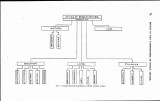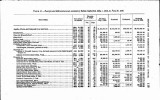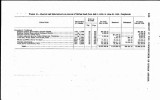| OCR Text |
Show About 33 acres of alfalfa were planted, comprising about 100 different strains of seed, with good results as to some of the varie-ties. Apricots of a choice variety are making fine growth. Nine varieties of citranges are being tested, some of them promising well. Eight varieties of Navajo corn were planted in 1908, and, in 1909, 13 kinds of Mexican corn and some Pima, Hopi; and Navajo corn. At the end of the growing season in 1908 some of the corn was caught by an early frost before the seed matured. The results obtained from Egyptian cotton were good, about 5,000 pounds of a very fine quality having been gathered. Twelve acres are growing during the present year. Other products being experimented with are as follows: Casabas, or winter melons, dates, figs, 21 varieties of grapes, pecanq, pistache, pomegranates, olives, peaches, plums, almonds, and strawberries. The result with Bermuda onions has been especially good, the yield being large and the quality as k e as has ever been produced anywhere. Nearly all the work has been done by the Indians, and their interest .has been very greatly enlisted through what they have seen accom-plished on the experimental farm. It has resulted in improved methods on their own tracts. The experimental farm at Shiprock, N. Mex., comprises 50 acres. The superintendent selected the roughest land on the farm for the purpose of demonstrating to the Indians that rough and uneven land, which they have regarded as incapable of cu~ltivationc, an be made to produce good results when properly cultivated. The work during the last year has almost altogether been preparatory, in the form of grading and levelin! the land and the digging of ditches. The green-house for propagatmg purposes has been' completed. Twenty-one varieties of alfalfa were planted and are doing nicely, and other forage plants are making a good growth. A large variety of vege tables was planted and they were showing up well at latest reports. Experimental work was opened up on the Colorado River Reser-vation at Parker, Ariz., during the year, with the assistance of Prof. S. C. Mason and G. P. Rixford, of the Bureau of Plant Industry. At the end of the fiscal year theEgyptian cotton which had been planted was making a fine showing, but the irrigation plant was not com-pleted, and many of thevarietiesof seeds and plants failed to progress as satisfactorily as they would have if an ample supply of water had been available. This diculty has been overcome, and it is expected . that future results will be as successful as elsewhere. During the season there has been growing on the farm fig cuttings, citranges, peaches, plums, almondh, casabas, radishes, lettuce, mustard, and kohl-rabi. Supt. W. R. Logan of the Fort Belknap Reservation has super-intended the construction of an irrigation system on that reservation |









































































































































































